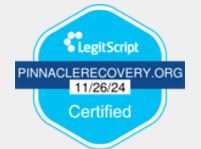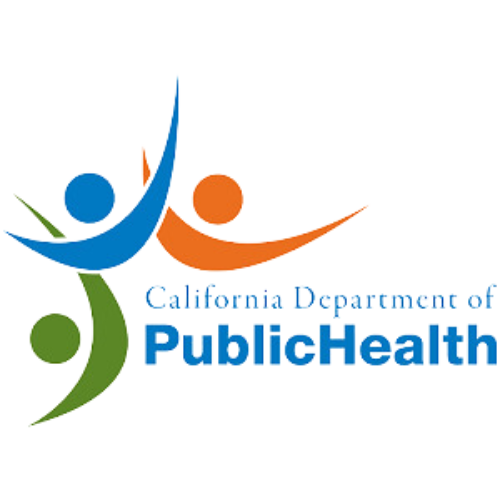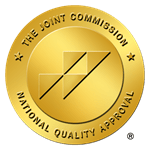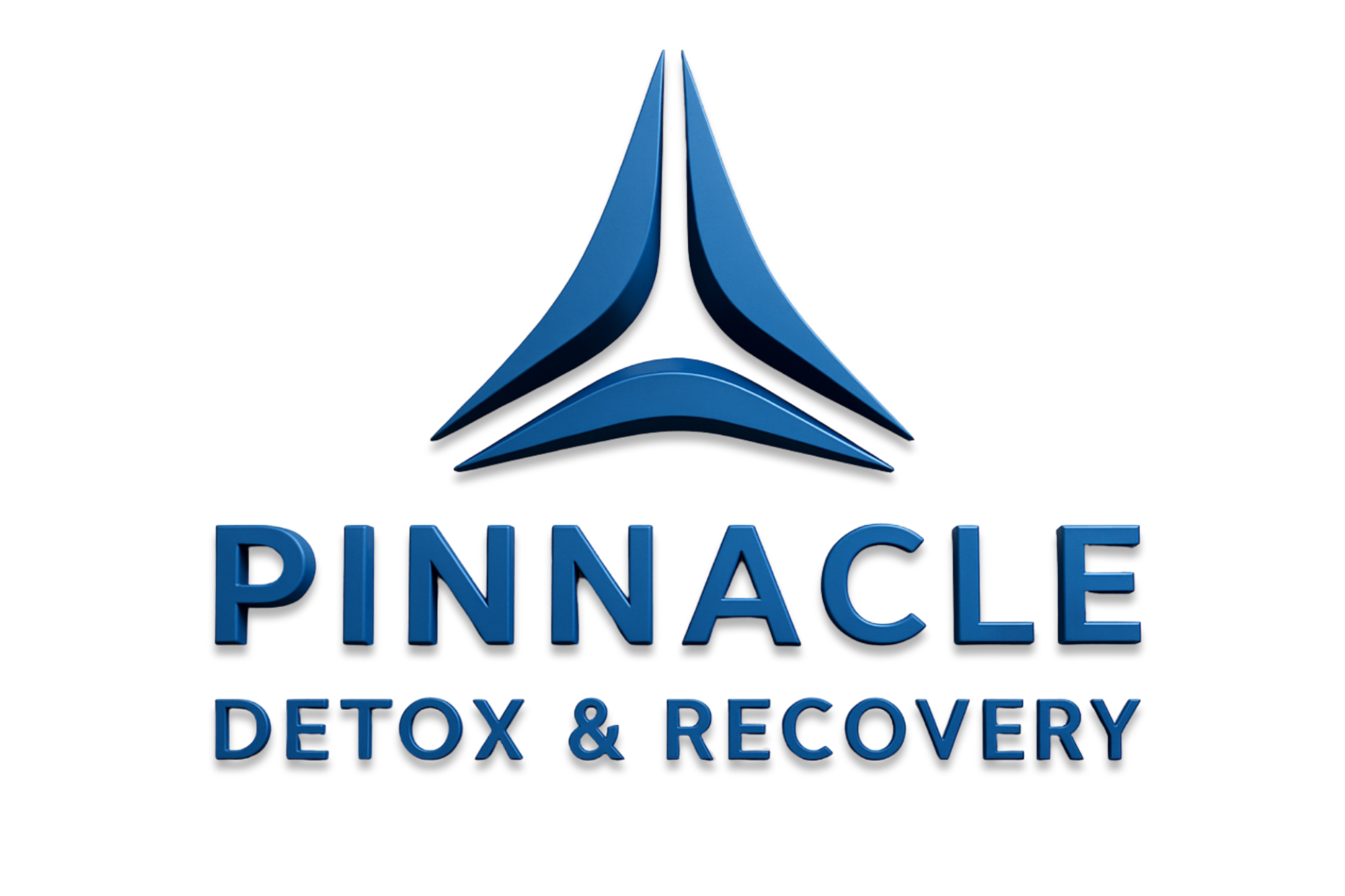Essential books on
behavioral addiction must include "Behavioral Addictions: Criteria, Evidence, and Treatment" by Rosenberg and Feder for its extensive
neuroscience foundation, and "In the Domain of Hungry Ghosts" by Gabor Maté for
trauma-informed perspectives. You'll also want Mark Lewis's "The Biology of Desire" for modern recovery frameworks, and "Addiction and Change" by DiClemente for
evidence-based intervention strategies. Understanding these core texts will strengthen your grasp of this evolving field's theoretical and practical intricacies.
Understanding the Neuroscience of Behavioral Addiction
While
behavioral addiction may appear solely psychological, its roots lie deeply in
neurobiological processes that mirror substance addiction. Your brain's
mesolimbic dopamine system drives the reinforcing effects, with dopamine release far exceeding natural rewards, leading to compulsive behavior patterns. The neuroadaptations in the brain's
extended amygdala contribute significantly to the withdrawal and negative emotional states associated with addiction. The molecular signaling changes are profound, particularly in the upregulation of
cAMP/PKA pathways within the nucleus accumbens. These alterations, combined with epigenetic influences through augmented
ΔFosB transcription, create lasting neural adaptations. Research shows that
D1-MSNs and D2-MSNs play distinct roles in processing addictive behaviors through their opposing responses to dopamine signaling. You'll find the progression from voluntary to habitual behavior stems from specific circuit shifts, particularly in the
dorsolateral striatum. This transformation explains why behavioral addictions become increasingly resistant to treatment over time, as neural pathways shift from goal-directed to automatic, compulsive responses. Modern understanding of these processes has helped eliminate the outdated view of addiction as a
moral failing, leading to more effective treatment approaches.
Key Research and Clinical Frameworks
Building on the
neurobiological foundations of behavioral addiction, researchers have developed sophisticated clinical frameworks to understand and treat these conditions. The Component Model of Addiction Treatment (CMAT) offers a unified approach, targeting
shared vulnerabilities across different addiction types. You'll find this framework particularly valuable as it addresses core issues like urgency, maladaptive expectancies, and self-control deficits. Research indicates that
attentional set-shifting deficits contribute significantly to compulsive behaviors in addiction. Recent literature emphasizes the importance of
avoiding confirmatory approaches when studying behavioral addictions.
While
critiques of component models raise valid concerns about
overpathologizing common behaviors, the field has responded with nuanced methodological approaches. The
I-PACE model exemplifies this evolution, examining how predisposing factors interact with environmental triggers and cognitive responses. Recent research has shown that
emotional dysregulation plays a key role in both behavioral and substance addictions. You'll need to understand how addiction progresses from
positive reinforcement to compulsive engagement, with particular attention to the critical role of inhibitory control loss in early stages.
Modern Perspectives on Recovery and Treatment
Three major innovations have transformed modern addiction recovery:
psychedelic-assisted therapies,
advanced pharmacological interventions, and
trauma-informed care approaches.
Person centered approaches now recognize addiction's complex interplay with trauma, brain chemistry, and behavioral patterns.
Managing chronic conditions through ongoing treatment has become a cornerstone of modern recovery programs.
Modern treatment frameworks emphasize
holistic recovery modalities that target multiple aspects of healing:
- GLP-1 receptor agonists show promising results in reducing substance cravings by modulating neural reward pathways
- Psychedelic-assisted therapy breaks destructive patterns while addressing underlying psychological trauma
- Integrated behavioral interventions combine CBT with family therapy and contingency management
- Recovery support services focus on non-drug rewards, creating sustainable pathways through social and occupational engagement
This evidence-based evolution in treatment recognizes that successful recovery requires addressing both neurobiological mechanisms and environmental factors while supporting long-term behavioral change. The integration of
wearable technology allows for real-time monitoring of stress levels and potential triggers, enabling immediate intervention before relapse occurs.
Mindfulness training has emerged as a powerful tool for developing emotional regulation and awareness of triggers in the recovery process.
Since trauma exposure greatly increases vulnerability to behavioral addictions, understanding its role has become pivotal to modern addiction treatment. By integrating trauma-informed principles into behavioral addiction care, clinicians now recognize how past traumatic experiences shape addictive patterns. Developing client-centered interventions requires extensive trauma assessment and collaborative treatment planning.
Childhood trauma strongly predicts substance use disorders and compulsive behaviors in early adulthood. Recent studies indicate that
emotional abuse and sexual trauma are the strongest predictors of sex addiction in men. Treatment outcomes improve significantly when providers focus on
building client resilience while addressing trauma histories.
| Trauma Impact |
Clinical Approach |
Treatment Goals |
| Emotional dysregulation |
Safety-first protocols |
Stabilization |
| Impaired self-control |
Collaborative assessment |
Skill building |
| Attachment issues |
Trust development |
Secure relationships |
| Maladaptive coping |
Empowerment focus |
Adaptive strategies |
| Complex comorbidity |
Integrated treatment |
Holistic recovery |
Research shows that trauma-informed care boosts treatment outcomes by addressing both addiction and underlying trauma simultaneously, while preventing re-traumatization through institutional practices that promote safety, trust, and client empowerment.
Evidence-Based Assessment and Intervention Strategies
To effectively treat
behavioral addiction, you'll need to master validated assessment tools like the Behavior Risk Assessment Screen (BRAS) and standardized instruments that measure specific addictive behaviors. The
CAGE assessment tool provides a quick initial screening method that can be adapted for various behavioral addictions. Clinicians should recognize that effective assessment requires evaluating the
Four C's to distinguish between healthy engagement and addiction.
Evidence-based interventions, particularly
CBT, DBT, and Motivational Interviewing, have demonstrated consistent efficacy through rigorous empirical validation requiring multiple randomized controlled trials. These clinical approaches must align with the
Division 12 Task Force framework while incorporating standardized protocols that can be documented in electronic medical records and adapted across diverse populations. Research shows that
treatment duration directly correlates with positive outcomes in addressing behavioral addictions.
Standardized assessment tools form the backbone of
evidence-based diagnosis and treatment planning for behavioral addictions. The field's extensive screening approaches have evolved to incorporate
transdiagnostic assessment frameworks, enabling clinicians to capture the complex nature of addictive behaviors.
- The FDAV questionnaire stands out for its modular design, allowing you to assess multiple behavioral addictions while maintaining diagnostic precision across different populations.
- BRAS provides vital risk assessment across seven life domains, helping you quantify addiction severity on a 0-100 scale.
- Youth-specific tools like CRAFTT 2.0 and S2BI offer validated screening options for adolescent populations, focusing on early intervention.
- Digital innovations such as BrainPAC introduce neurocognitive assessment methods, adding objective measures to traditional screening approaches.
Clinical Intervention Best Practices
Building on reliable assessment practices, evidence-based clinical interventions provide the foundation for effective behavioral addiction treatment. When selecting interventions for dual diagnosis considerations, you'll find that combining behavioral and pharmacological approaches often yields superior outcomes. Integrative treatment modalities should align with the client's stage of change and specific needs.
| Intervention Type |
Primary Components |
Preferred Applications |
| CBT-Based |
Cognitive restructuring, behavioral strategies |
Primary treatment |
| Combined Treatment |
Pharmacotherapy + behavioral therapy |
Severe cases, dual diagnosis |
| Harm Reduction |
Risk minimization, staged intervention |
Early intervention |
| Multimodal |
Family therapy, group work, mindfulness |
Complex presentations |
Evidence supports using CBT as your cornerstone intervention, while incorporating harm reduction strategies and family-based approaches to enhance treatment effectiveness. You'll achieve ideal results by matching interventions to client readiness and severity levels.
The Role of Brain Chemistry in Compulsive Behaviors
Your understanding of
behavioral addiction requires examining how
dopamine, a key neurotransmitter, drives compulsive behaviors through the brain's
reward circuitry, particularly in the cortico-striato-thalamo-cortical (CSTC) pathways. Research shows that repeated engagement in addictive behaviors alters neural pathways, creating persistent changes in how your brain processes rewards and makes decisions. These structural and functional changes in brain regions like the anterior cingulate cortex (ACC) and
striatum explain why breaking free from behavioral addictions isn't simply a matter of willpower, but requires interventions that address the underlying
neurochemical imbalances.
Dopamine's Role in Addiction
To understand
behavioral addiction, we must initially examine
dopamine's central role in driving compulsive behaviors. The
neurological mechanisms behind behavioral addictions mirror substance use disorders, as both involve dopamine imbalance in the brain's reward system. Research shows that whether you're gambling, binge eating, or using drugs, your brain's dopamine pathways respond similarly to
addiction-related cues.
Key findings demonstrate that dopamine influences addiction through:
- Triggering intense cravings when exposed to addiction-related stimuli
- Strengthening maladaptive learning patterns that resist negative feedback
- Facilitating the movement from voluntary to compulsive behaviors
- Altering decision-making processes in striatal brain regions
These dopamine-mediated changes explain why behavioral addictions persist despite
negative consequences, making
targeted interventions important for effective treatment approaches.
Neural Pathways and Rewards
While
natural rewards activate the brain's pleasure centers,
behavioral addictions dramatically amplify this response by hijacking neural pathways through excessive
dopamine release. You'll find that compulsive behaviors trigger up to 10 times more dopamine than natural rewards, overwhelming the brain's reward pathway modulation systems.
This hyperactivation targets the
nucleus accumbens and
dorsal striatum, creating powerful reinforcement learning processes that strengthen addictive patterns. Your brain's
neuroplasticity works against you, as repeated engagement solidifies these maladaptive neural circuits. Over time, you'll experience diminished pleasure from the behavior while craving intensifies, a hallmark of addiction. The brain's opioid and dopamine signaling systems become chronically altered, making it increasingly difficult to resist compulsive urges despite negative consequences.
Brain Structure Changes
Research consistently demonstrates that behavioral addictions induce profound
structural changes across key brain regions, particularly affecting the
prefrontal cortex and
white matter pathways. These alterations manifest through structural reorganization and functional connectivity changes that markedly impact
cognitive and emotional processing.
Key findings reveal:
- Reduced prefrontal cortex volume correlates with shorter relapse intervals and compromised executive function
- Decreased cortical thickness in the left insular and lateral orbitofrontal regions impairs decision-making capabilities
- Substantial white matter deficits in bilateral corticospinal tracts affect motor control and behavioral regulation
- Extended amygdala alterations intensify stress responses and negative emotional states
You'll find these neurological changes particularly concerning in adolescents, whose prefrontal cortex hasn't fully matured. Understanding these structural modifications proves essential for developing targeted interventions and treatment strategies.
Cultural and Environmental Factors in Addiction
Understanding cultural and environmental factors proves essential for grasping the complex nature of behavioral addiction. You'll find that cultural preservation and strong community support systems can protect against addiction development, while cultural disruption often increases vulnerability. Research shows that societies with permissive attitudes toward addictive behaviors experience higher prevalence rates.
| Factor |
Risk Impact |
Protection Strategy |
| Cultural Norms |
High influence on behavior |
Maintain traditional values |
| Social Environment |
Direct effect on usage patterns |
Build support networks |
| Economic Status |
Increases vulnerability |
Develop resource access |
Your awareness of these elements matters because socioeconomic conditions, peer influences, and family dynamics substantially shape addiction risk. Communities experiencing rapid social change or migration often exhibit elevated addiction rates, particularly when traditional protective factors erode. The intersection of cultural identity and environmental stressors creates unique challenges in addiction prevention and treatment.
Therapeutic Approaches and Clinical Applications
Multiple
evidence-based therapeutic approaches have emerged as effective interventions for behavioral addictions, with Cognitive-Behavioral Therapy (CBT) standing as the gold standard treatment. When examining ideal treatment planning, clinicians must consider both
individualized skill building and evidence-based protocols that demonstrate
measurable outcomes.
Key therapeutic interventions include:
- CBT's structured approach to functional analysis and skills training over a minimum two-month period
- Motivational Interviewing's focus on amplifying intrinsic motivation and self-efficacy
- Contingency Management's use of positive reinforcement through vouchers or prizes to sustain behavioral change
- 12-Step Facilitation's integration of peer support and social network augmentation
Research supports combining these approaches, particularly when
tailoring interventions to client needs and incorporating both individual and group modalities for supreme treatment outcomes.
Breaking Down Stigma and Misconceptions
You'll uncover that
widespread misconceptions about behavioral addiction often stem from harmful stereotypes that portray it as a moral failing rather than a complex
neurobiological condition. Research shows that
over 90% of people express unwillingness to accept someone with addiction into their family, highlighting how deeply ingrained these stigmatizing attitudes remain in society. Understanding the scientific evidence behind addiction's biological and psychological mechanisms can help you move beyond judgment to recognize it as a treatable health condition requiring compassionate,
evidence-based interventions.
Challenging Common Addiction Myths
Despite widespread cultural narratives about addiction,
scientific evidence consistently shows that many commonly held beliefs are rooted in
misconception rather than fact. Understanding nuanced perspectives on personal choice and
challenging societal attitudes toward addiction requires examining key myths through a
clinical lens.
- Your brain physically changes with addiction, making "just stop" an oversimplified and ineffective approach to recovery
- Addiction transcends demographic boundaries, affecting individuals regardless of their social status or outward appearance
- Behavioral addictions share neurobiological patterns with substance dependencies, demanding equal clinical concentration
- Recovery success depends more on evidence-based interventions than willpower alone
These scientific realities contradict popular beliefs that frame addiction solely as a moral failing or personality flaw. By recognizing addiction's complex
neurobiological foundations, you'll better understand why comprehensive treatment approaches are essential.
Beyond Shame and Judgment
While society has made strides in understanding
mental health conditions,
stigma remains one of the most significant barriers preventing individuals from seeking treatment for
behavioral addictions. Research shows that between 22% and 40% of those with addictive disorders cite stigma as a major obstacle, with only 4.5% receiving
facility-based treatment despite millions needing help.
You'll find that fostering community support is pivotal, as negative stereotypes and public misconceptions continue driving social isolation. The key lies in empowering self-narrative, moving away from labels that reduce individuals to their conditions and instead recognizing addiction as a complex
brain-based disorder. Studies consistently demonstrate that increased familiarity with addiction correlates with reduced stigma, highlighting the importance of
education and understanding in breaking down barriers to treatment.
Essential Resources for Professional Development
For clinicians seeking to build expertise in
behavioral addiction treatment, several foundational texts stand out as
essential resources for professional development. These exhaustive works integrate
addiction epidemiology and public policy perspectives while offering
evidence-based frameworks for assessment and intervention.
- A Clinical Guide to Treating Behavioral Addictions provides detailed protocols and decision trees for identifying and treating 11 distinct behavioral addictions.
- Never Enough bridges neuroscience with clinical practice through its integrated analysis of brain mechanisms and treatment approaches.
- The Science of Addiction delivers thorough insights into biological foundations and evidence-based interventions.
- Unbroken Brain challenges traditional paradigms by reframing addiction as a learning disorder, offering fresh perspectives for treatment planning.
These resources equip practitioners with cutting-edge knowledge for effective clinical practice.
Frequently Asked Questions
When you're studying addiction research material digitally, you'll likely experience reduced retention due to
digital reading distraction and
screen fatigue impact. Research shows that hyperlinks and uniform digital layouts can interfere with
deep comprehension of complex clinical content. You'll retain more information through print formats, which bolster memory encoding and
emotional connection. However, if you're a highly skilled reader with extensive digital experience, you may notice minimal comprehension differences between formats.
What Role Do Book Publishers Play in Shaping Behavioral Addiction Discourse?
Book publishers greatly shape
behavioral addiction discourse through
publisher incentives that prioritize marketable topics and established frameworks. You'll notice they influence the field by selecting which perspectives receive widespread distribution, often favoring works that align with
dominant clinical models. Through
industry influence, they control accessibility, pricing, and promotion of certain viewpoints. They're also gatekeepers who determine which emerging addiction concepts reach academic and clinical audiences through textbooks and professional references.
How Often Should Addiction Literature Be Updated to Remain Clinically Relevant?
You should review
addiction literature every 2-5 years at minimum, with more frequent updates if breakthrough evidence emerges. Given current addiction research trends, you'll need to monitor core journals quarterly to stay clinically relevant. Literature review frequency should increase during public health crises or when new treatment protocols emerge. You'll want to focus particularly on
systematic reviews, neurobiological advances, and
treatment outcomes to maintain evidence-based practice standards.
Which Behavioral Addiction Books Are Most Cited in Academic Research?
You'll find "The Cambridge Handbook of Substance and Behavioral Addictions" (2020) and Marlatt & Gordon's "Relapse Prevention" (1985) consistently leading citation counts in addiction research trends. These works substantially shape
evidence-based addiction treatments in academic literature.
Brand's 2022 extensive review and the National Academies' "Pathways of Addiction" (1996) also maintain high citation rates. For cutting-edge methodologies, you should reference the
Psychology of Addictive Behaviors journal's most-cited publications.
Do Audiobook Versions Provide Equivalent Learning Outcomes for Addiction Professionals?
You won't achieve equivalent learning outcomes through
audiobooks alone for addiction-related professional development. While
audiobook learning styles can support knowledge acquisition and review, research indicates they're less effective for developing clinical skills like
motivational interviewing or
CBT. To optimize audiobook comprehension strategies, you'll need to combine them with interactive training, supervision, and hands-on practice. They work best as supplements to traditional learning methods rather than standalone resources.
 While behavioral addiction may appear solely psychological, its roots lie deeply in neurobiological processes that mirror substance addiction. Your brain's mesolimbic dopamine system drives the reinforcing effects, with dopamine release far exceeding natural rewards, leading to compulsive behavior patterns. The neuroadaptations in the brain's extended amygdala contribute significantly to the withdrawal and negative emotional states associated with addiction. The molecular signaling changes are profound, particularly in the upregulation of cAMP/PKA pathways within the nucleus accumbens. These alterations, combined with epigenetic influences through augmented ΔFosB transcription, create lasting neural adaptations. Research shows that D1-MSNs and D2-MSNs play distinct roles in processing addictive behaviors through their opposing responses to dopamine signaling. You'll find the progression from voluntary to habitual behavior stems from specific circuit shifts, particularly in the dorsolateral striatum. This transformation explains why behavioral addictions become increasingly resistant to treatment over time, as neural pathways shift from goal-directed to automatic, compulsive responses. Modern understanding of these processes has helped eliminate the outdated view of addiction as a moral failing, leading to more effective treatment approaches.
While behavioral addiction may appear solely psychological, its roots lie deeply in neurobiological processes that mirror substance addiction. Your brain's mesolimbic dopamine system drives the reinforcing effects, with dopamine release far exceeding natural rewards, leading to compulsive behavior patterns. The neuroadaptations in the brain's extended amygdala contribute significantly to the withdrawal and negative emotional states associated with addiction. The molecular signaling changes are profound, particularly in the upregulation of cAMP/PKA pathways within the nucleus accumbens. These alterations, combined with epigenetic influences through augmented ΔFosB transcription, create lasting neural adaptations. Research shows that D1-MSNs and D2-MSNs play distinct roles in processing addictive behaviors through their opposing responses to dopamine signaling. You'll find the progression from voluntary to habitual behavior stems from specific circuit shifts, particularly in the dorsolateral striatum. This transformation explains why behavioral addictions become increasingly resistant to treatment over time, as neural pathways shift from goal-directed to automatic, compulsive responses. Modern understanding of these processes has helped eliminate the outdated view of addiction as a moral failing, leading to more effective treatment approaches.
 Three major innovations have transformed modern addiction recovery: psychedelic-assisted therapies, advanced pharmacological interventions, and trauma-informed care approaches. Person centered approaches now recognize addiction's complex interplay with trauma, brain chemistry, and behavioral patterns. Managing chronic conditions through ongoing treatment has become a cornerstone of modern recovery programs.
Modern treatment frameworks emphasize holistic recovery modalities that target multiple aspects of healing:
Three major innovations have transformed modern addiction recovery: psychedelic-assisted therapies, advanced pharmacological interventions, and trauma-informed care approaches. Person centered approaches now recognize addiction's complex interplay with trauma, brain chemistry, and behavioral patterns. Managing chronic conditions through ongoing treatment has become a cornerstone of modern recovery programs.
Modern treatment frameworks emphasize holistic recovery modalities that target multiple aspects of healing:
 To effectively treat behavioral addiction, you'll need to master validated assessment tools like the Behavior Risk Assessment Screen (BRAS) and standardized instruments that measure specific addictive behaviors. The CAGE assessment tool provides a quick initial screening method that can be adapted for various behavioral addictions. Clinicians should recognize that effective assessment requires evaluating the Four C's to distinguish between healthy engagement and addiction. Evidence-based interventions, particularly CBT, DBT, and Motivational Interviewing, have demonstrated consistent efficacy through rigorous empirical validation requiring multiple randomized controlled trials. These clinical approaches must align with the Division 12 Task Force framework while incorporating standardized protocols that can be documented in electronic medical records and adapted across diverse populations. Research shows that treatment duration directly correlates with positive outcomes in addressing behavioral addictions.
To effectively treat behavioral addiction, you'll need to master validated assessment tools like the Behavior Risk Assessment Screen (BRAS) and standardized instruments that measure specific addictive behaviors. The CAGE assessment tool provides a quick initial screening method that can be adapted for various behavioral addictions. Clinicians should recognize that effective assessment requires evaluating the Four C's to distinguish between healthy engagement and addiction. Evidence-based interventions, particularly CBT, DBT, and Motivational Interviewing, have demonstrated consistent efficacy through rigorous empirical validation requiring multiple randomized controlled trials. These clinical approaches must align with the Division 12 Task Force framework while incorporating standardized protocols that can be documented in electronic medical records and adapted across diverse populations. Research shows that treatment duration directly correlates with positive outcomes in addressing behavioral addictions.



